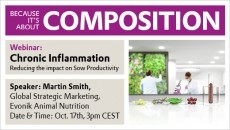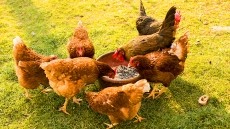Reports from VICTAM 2019, in Cologne
Rethinking feed conditioning and grinding processes
Marin van Kempen, spokesperson for the Dutch feed processing group, told us why this piece of kit made the grade.
The Hot Start Steam Mixer is aimed at optimizing the conditioning process by ensuring accurate heat treatment, she said. Combined with its extremely short start-up time, the mixer prevents wastage at batch start-up, reduces contamination risks and speeds up the production process, she said.
“It helps to optimize the production of safe feed by preventing contamination of further processes by untreated product. As all product exiting the Hot Start Steam Mixer has reached the required temperature, wastage at batch start-up is prevented.”
The short batch start-up time helps feed millers to maximize capacity while ensuring the desired feed quality, thus keeping feed costs low, she continued.
Another key feature is the steam dosing control, she said. Steam quantity is based on the temperature of the feed exiting the steam mixer and the specified target temperature, said the spokesperson.
Split-grinding
Van Aarsen is also looking to increase the nutritional value of feed through its split-grinding technological innovation, said van Kempen.
Split-grinding, she said, involves the separation of one batch of raw materials into two sub-batches that are individually dosed and ground. Afterwards, the sub-batches are collected and mixed together for further processing.
Compared to a post-grinding batch process, split-grinding allows optimization of the nutritional value of the feed, less energy consumption during the grinding process and higher line-capacity through an increased number of batches per hour, claimed van Kempen.
When weighing up split-grinding's benefits in relation to a pre-grinding set up, she said it lowers investment requirements as no storage bins for pre-grinding raw materials are needed.
In general, protein-rich raw materials require a finer grind for optimal digestion than carbohydrate-rich raw materials.
In a post-grinding batch process, raw materials are all ground to the same fine particle size e.g. on a 3mm screen.
In the split-grinding approach, nutrients are ground to the size required by different animal species, she said.
“In a split grinding process, the raw materials are grouped into two sub-batches based on their nutritional function and ground to a separate optimal particle size for each group e.g. respectively on a 2,5 and a 4,5 mm screen.”


















